Introducing Mayu Bente: A Fusion of Passion and Heritage
Food is not only a means of sustenance but also a form of art, a conversation starter, and a crucial element in our daily lives. In multicultural Australia, food plays a pivotal role in bridging gaps between various cultures, fostering connections, and celebrating the beauty found within the similarities and differences of diverse cuisines.
Meet Mayu Bente, a Japanese cooking instructor in South Yarra, Melbourne. For Mayu, cooking is not only a passion but also a means of making a living. With a rich background deeply rooted in the culinary world, Mayu’s father owns a restaurant in Japan, instilling in her a profound appreciation for the art of cooking. Having moved to Australia a decade ago with her husband, Mayu has immersed herself in the country’s multicultural fabric, finding inspiration and joy in the fusion of flavours and traditions.
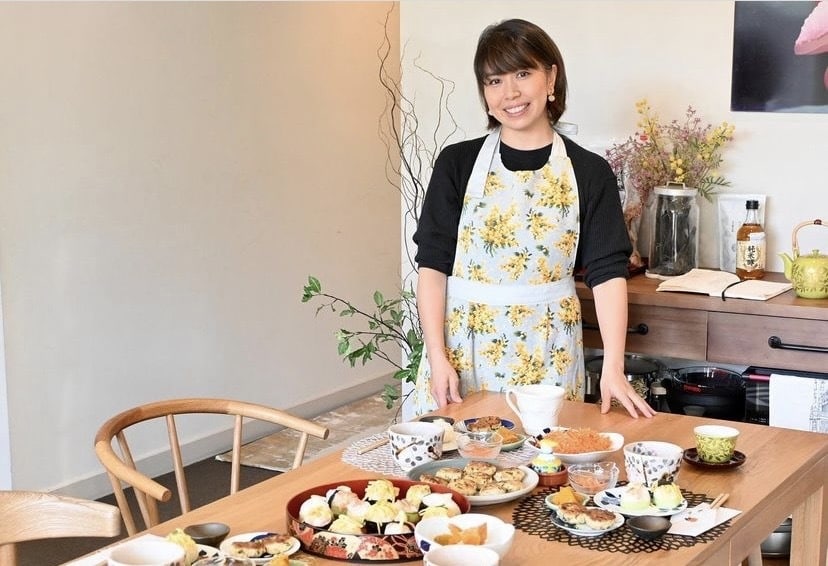
Beyond her cooking classes in the comfort of her home, Mayu has also found a platform for sharing her expertise. Her radio show, “Eating in Australia”, airs on SBS Japanese, where she engages in captivating discussions about food-related topics based on her experiences in Australia. With a keen interest in Taiwanese cuisine, Mayu also explores the art of cooking Taiwanese dishes, drawing from her Taiwanese friends back in Japan.
Hands-On Learning Experience
For Mayu, her time in Australia has provided an opportunity to educate others about the art of cooking from her home country, sharing the techniques and intricacies behind its delicate flavours. By stumbling across her ad on Instagram, I attended one of her classes with my sister and friend, eager to learn the traditional way of preparing one of my favourite cuisines.
Upon arriving at Mayu’s home, we were warmly welcomed into her living room and kitchen, filled with Japanese cookbooks and silverware from her mother, evoking a sense of authenticity and connection to her family back in Japan. The class began with an introduction to the diverse range of Japanese ingredients, including staples such as konbu (kelp), katsuo-bushi (dried bonito flakes) and soy sauce, which form the base of many Japanese dishes.
As we delved deeper into culinary traditions, Mayu shared insights about regional variations in ingredient usage across Japan. For instance, we learned about lighter soy sauce commonly used in the Southern regions and the darker variant more widely used nationwide, each contributing distinct flavours to their respective dishes. Exploring these nuances not only expanded our knowledge but also deepened our appreciation for the intricacies of Japanese cuisine.
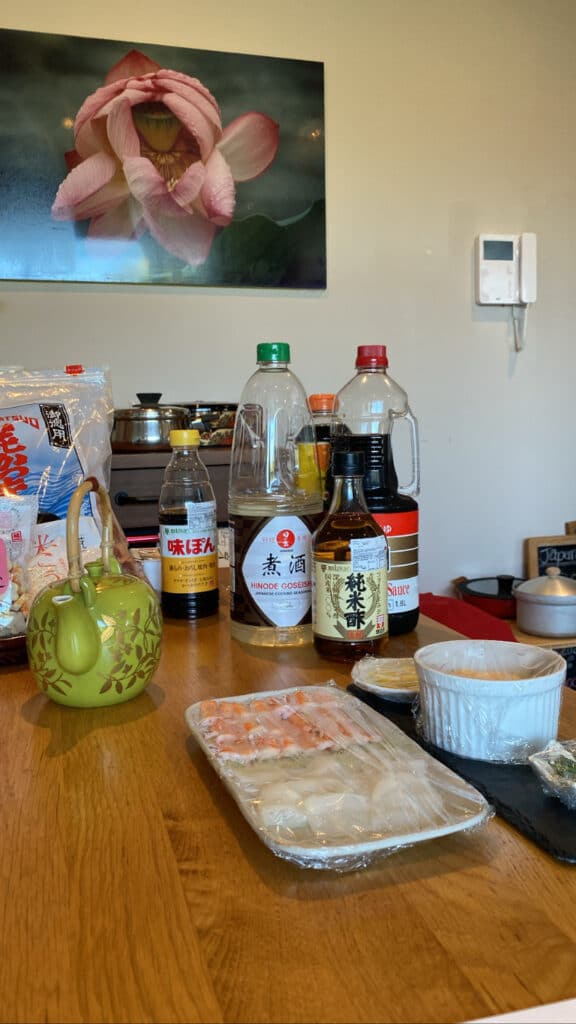
Throughout the class, we had the opportunity to cook together using the utensils thoughtfully prepared by Mayu. She patiently guided us through essential techniques, such as fanning the sushi rice to achieve the perfect texture and pouring the rice vinegar while simultaneously mixing it in a slicing motion to make temari sushi (handball sushi). It was interesting to learn about the different sushi types and understand how each type is made. As shown below, temari sushi is slightly smaller and round than maki sushi (rolled sushi) that we usually see in Japanese restaurants, as they were designed to be bite-sized for Geishas and Maikos to eat without running their makeup. These hands-on experiences not only honed our cooking skills but also connected us to the centuries-old traditions and methods passed down through generations.
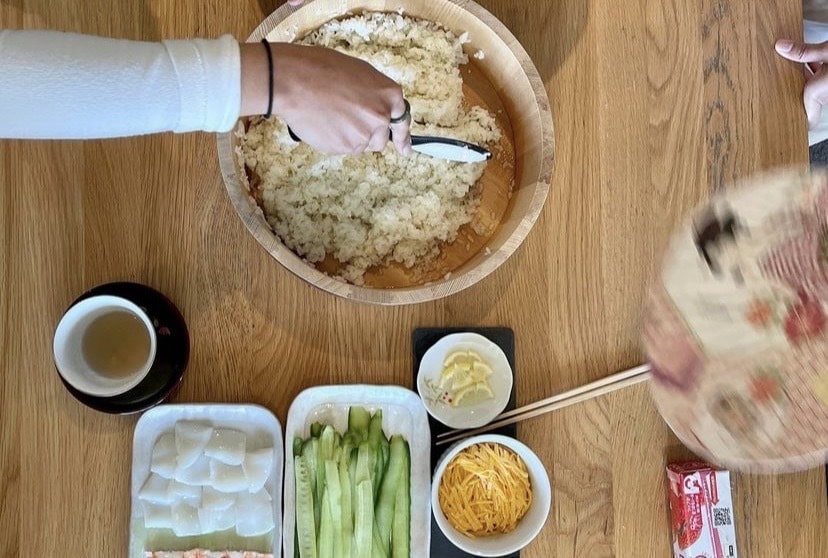
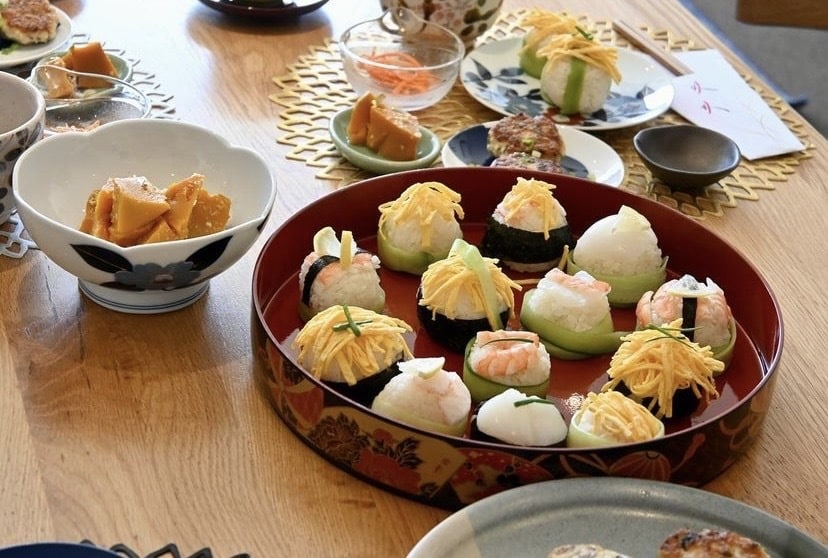
However, it wasn’t just the cooking techniques that made the class so memorable. One of the most pivotal moments came during the conversations we had together. Through sharing our love for food, we opened up about the food from our cultures and their similarities and differences. As my sister and I are Malaysian, and our friend is Indian, we discovered many common threads such as using hands for eating, similar curry dishes to each carry its own set of distinct flavours, and even the shared influence of religion on food practices. For instance, it was considering the influence of Buddhism on Japanese and Indian cuisine and how religious practices shape their food preparation, often abstaining from meat consumption. In these conversations, food’s true power to bridge cultures became evident.
Finally, the long waited moment arrived after several hours of whisking Shio Koji (salt-malted rice) with vinegar and sesame, mixing the tofu and chicken mixture about 100 times to make patties, and fanning the sushi rice, we were able to sit down and savour our delicious course. The experience of eating food that we had invested time and effort in not only satisfied our taste buds but was also equally nourishing. It reminded us of the value of conscious eating, savouring every bite and appreciating the cultural significance behind each dish.
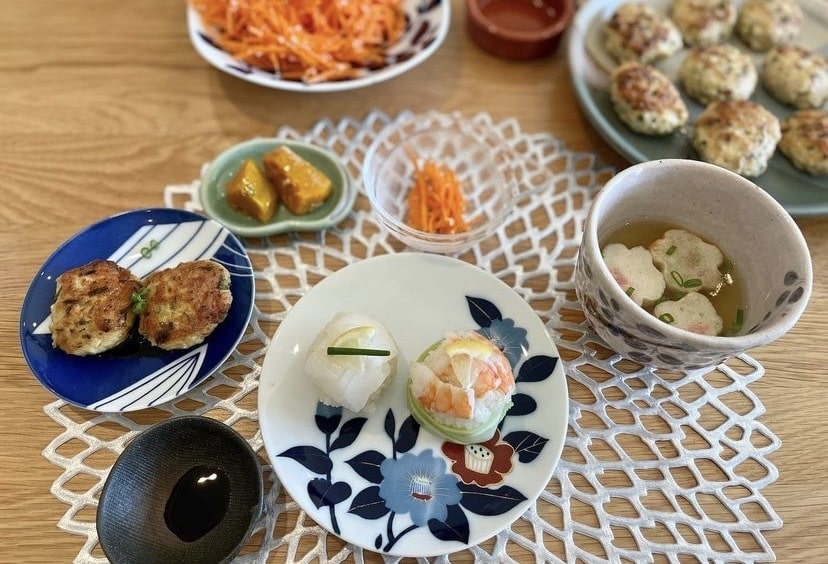
As we indulged in the flavours and textures, we exchanged memories from our homelands, sharing anecdotes about how food is consumed and celebrated in our cultures. In these conversations, we discovered commonalities that brought us closer together, strengthening the bonds formed through our shared love for food. It became evident that regardless of our backgrounds, we all had stories to tell and experiences to share that enriched our understanding of one another.
Mayu’s classes provided an opportunity to learn the art of Japanese cooking and a platform for cultural exchange and understanding. By exploring ingredients, techniques, and shared experiences, we discovered the beautiful tapestry of flavours and traditions that connect us as global citizens. It served as a reminder that food has the incredible ability to transcend borders, celebrate diversity, and foster connections that go beyond the kitchen.
References
A Guide to Soy Sauce Varieties n.d., Serious Eats.
Yasuka 2020, Shōjin-ryōri: A Buddhists Cuisine | KCP Japanese Language School, KCP International, accessed 1 August 2023, <https://www.kcpinternational.com/2020/09/shojin-ryori-buddhists-cuisine/>.
www.master-jpcuisine.com. (n.d.). Variation of sushi. [online] Available at: https://www.master-jpcuisine.com/courses/606052/lectures/10875638 [Accessed 1 Aug. 2023].
